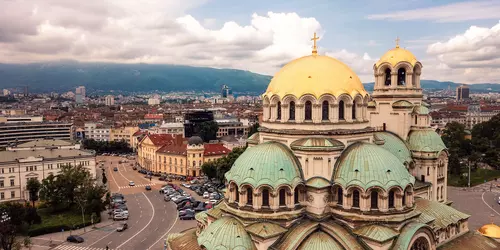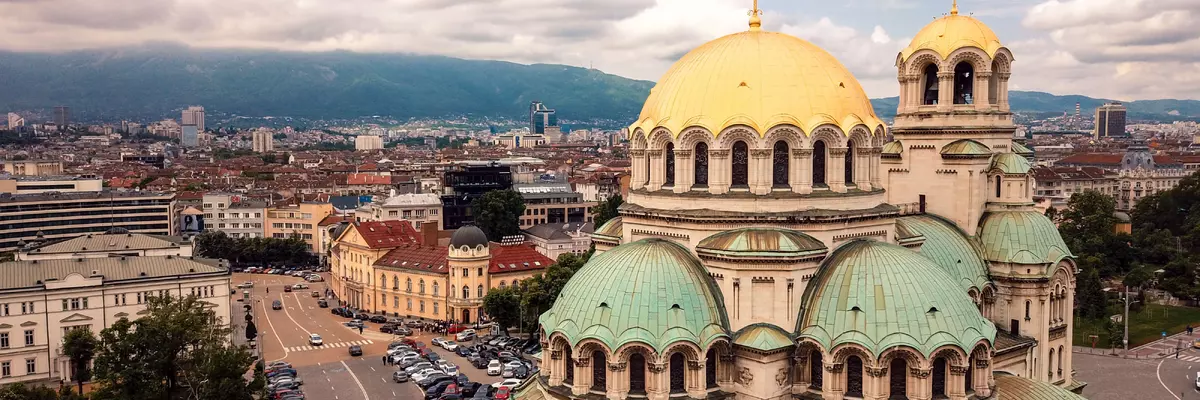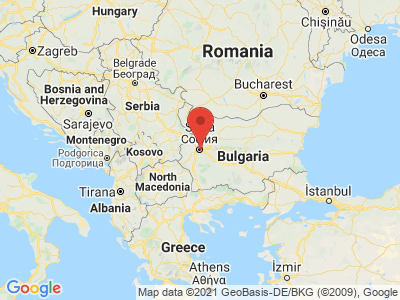Climate Table Sofia
Jan | Feb | Mar | Apr | May | Jun | Jul | Aug | Sep | Oct | Nov | Dec | |
|---|---|---|---|---|---|---|---|---|---|---|---|---|
| Max. Temperature | 2° | 5° | 10° | 16° | 21° | 24° | 27° | 27° | 23° | 16° | 9° | 4° |
| Min. Temperature | -5° | -3° | 0° | 5° | 10° | 14° | 16° | 15° | 11° | 7° | 3° | -2° |
| Sun Hours | 2 | 3 | 4 | 6 | 7 | 8 | 9 | 8 | 7 | 5 | 3 | 2 |
| Rain Days | 7 | 6 | 6 | 9 | 11 | 10 | 8 | 5 | 5 | 6 | 7 | 7 |
The climate year of Sofia
Sofia is the capital of Bulgaria. The city is located at an altitude of 595 meters in the west of the country. The border with neighboring Serbia is only about 60 kilometers away. The city backdrop is dominated by the 2290-meter-high Vitosha Mountains. To the west, Sofia borders on the Lyulin and Losen Mountains. About 50 kilometers away are the Sofia Mountains and the Murgash Mountains. Both mountain ranges are part of the Balkan Mountains, which cross Bulgaria from east to west and at the same time give its name to the entire Balkan Peninsula. The Iskar River, the longest river in the country, flows through the eastern districts of the Bulgarian capital. Its tributaries Perlowska and Wladajska also cross the city. However, since they run mostly underground, they are hardly present in the cityscape. Winters in Sofia are relatively cold due to the high altitude. In addition, there is usually a lot of snow. Summers are comparatively cool.
General information about Sofia
Sofia is home to many architectural and cultural monuments from different historical periods. Especially the large number of churches make Bulgaria's capital a tourist magnet. One of the oldest churches in Sofia is the Basilica "Sveta Sofia". It was built in the 5th century AD under the Byzantine Emperor Justinian. At the time of Ottoman rule over Bulgaria, the transformation into a mosque took place. Even older than the "Sveta Sofia" is the church "Sveti Georgi", which probably dates back to the 4th century BC. Of more recent construction is the Alexander Nevski Cathedral. The church, built in 1912, is one of the landmarks of the capital. Sofia also boasts numerous museums and galleries, where the country's art treasures can be viewed. In summer, the city's parks invite visitors to stroll and relax. In winter, skiers and snowboarders are attracted to the winter sports areas of the neighboring mountains.
Tourism Sofia
In the Bulgarian capital, a temperate continental climate combined with a high altitude of about 595 meters make for cold, snowy winters. January is the coldest month of the year, with average temperatures just below freezing. Winter lasts in Sofia until March. It is not until April that the thermometer climbs into double digits. In May, Sofia experiences early summer temperatures for the first time. In June, July and August, temperatures continue to rise. Midsummer heat, however, is rather the exception in Sofia, although in some years it can get very hot. Sightseeing tours through the Bulgarian capital are basically possible even in the hot season. The months of September and October are still comparatively mild. It is not until November that temperatures drop back into the single digits. From December, the winter season begins in Sofia and temperatures drop below freezing.
It is particularly rainy in Sofia in May and June. At this time, precipitation averages 73 to 75 millimeters. With about 33 foggy days, Sofia is also considered the foggiest city in the country. A record was set here in 1948, when it was foggy in the Bulgarian metropolis for 29 consecutive days in the month of December.


